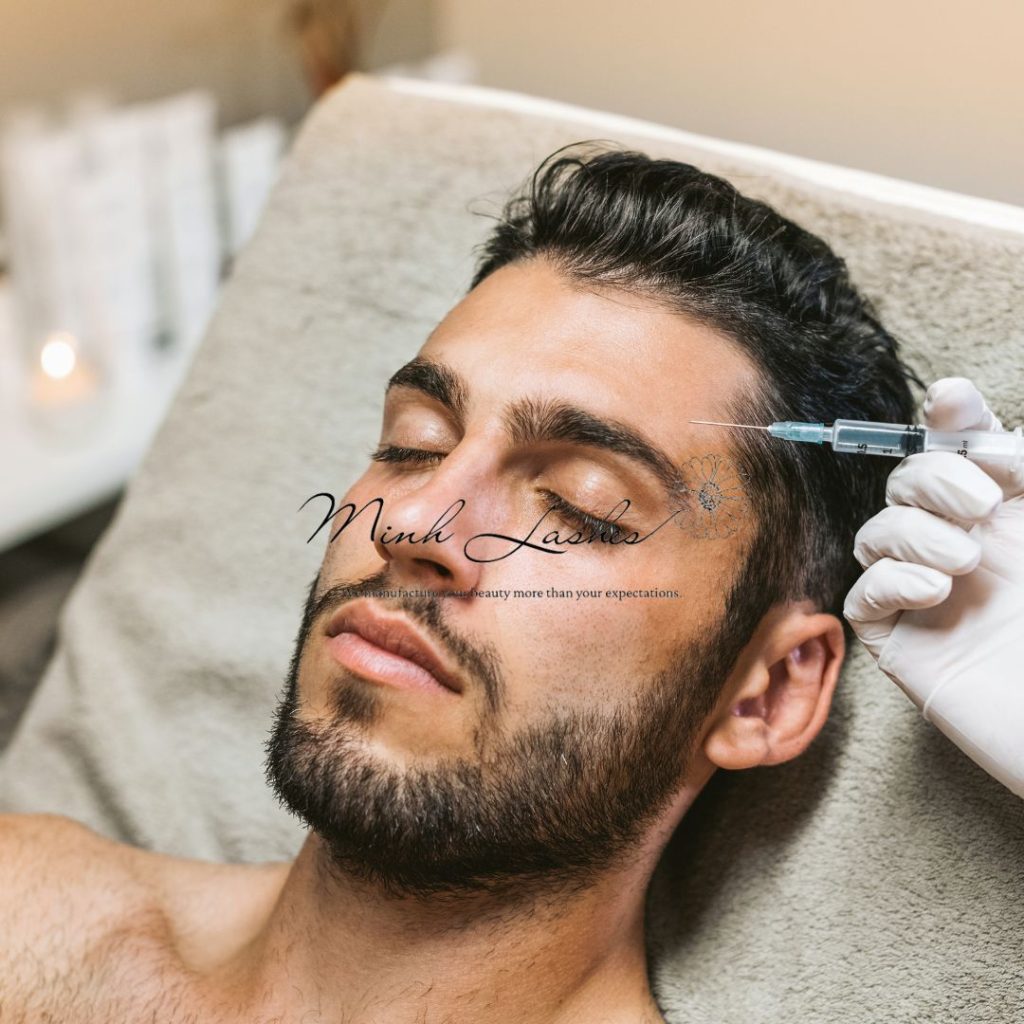No products in the cart.
Top 5 Benefits of Botox for Migraines: A Breakthrough Treatment for Chronic Headaches
Botox for Migraines: How This Cosmetic Treatment Is Transforming Pain Management
Table of Contents
- Introduction
- Understanding Migraines
- What is Botox?
- How Botox Works for Migraines
- The Botox Treatment Process
- Benefits of Botox for Migraines
- Potential Side Effects
- Who Can Benefit from Botox for Migraines?
- Finding a Qualified Provider
- Conclusion
Introduction
Chronic migraines can be debilitating, affecting every aspect of a person’s life. While traditional treatments offer relief for some, many continue to search for more effective solutions. Enter Botox for migraines, a treatment that has gained popularity in recent years. This blog post will explore how this well-known cosmetic procedure has become a game-changer in migraine management.
Understanding Migraines
Migraines are more than just bad headaches. They are complex neurological conditions that can cause intense pain, nausea, and sensitivity to light and sound. For those who suffer from chronic migraines, defined as 15 or more headache days per month, finding effective relief can be challenging.

Common migraine symptoms include:
- Throbbing or pulsing pain
- Sensitivity to light and sound
- Nausea and vomiting
- Visual disturbances (aura)
- Dizziness and fatigue
What is Botox?
Botox, short for Botulinum toxin, is a neurotoxin produced by the bacterium Clostridium botulinum. While it’s widely known for its cosmetic applications in reducing wrinkles, Botox has several medical uses, including the treatment of chronic migraines.
How Botox Works for Migraines
Botox works by blocking neurotransmitters that carry pain signals from the brain. When injected into specific areas around the head and neck, it can prevent these pain signals from reaching the nerve endings, effectively reducing the frequency and intensity of migraines.
Research suggests that Botox may also have a cumulative effect, meaning that patients often experience increased benefits with subsequent treatments.
The Botox Treatment Process
The process of receiving Botox for migraines is relatively straightforward:
- Consultation: Your doctor will assess your medical history and determine if you’re a good candidate for the treatment.
- Injection Session: The procedure involves multiple injections in specific sites around the head and neck. These typically include:
- Forehead
- Temples
- Back of the head
- Neck
- Shoulders
- Duration: The entire process usually takes about 15 minutes.
- Frequency: Treatments are typically administered every 12 weeks.

It’s important to note that results are not immediate. Most patients start to notice improvements about 2-3 weeks after treatment, with full effects often seen after the second or third treatment cycle.
Benefits of Botox for Migraines
The benefits of using Botox for migraine treatment can be significant:
- Reduced Frequency: Many patients experience fewer migraine days per month.
- Decreased Intensity: When migraines do occur, they are often less severe.
- Improved Quality of Life: With fewer and less intense migraines, patients often report better overall well-being.
- Long-lasting Effects: Each treatment can provide relief for up to 3 months.
- Minimal Downtime: The procedure is quick and requires no recovery time.
Potential Side Effects
While Botox is generally safe when administered by a qualified healthcare professional, there are some potential side effects to be aware of:
- Neck pain
- Headache (usually temporary)
- Slight bruising at injection sites
- Muscle weakness (rarely)
It’s crucial to discuss all potential risks and side effects with your healthcare provider before starting treatment.
Who Can Benefit from Botox for Migraines?
Botox for migraines is typically recommended for adults who:
- Experience 15 or more headache days per month
- Have tried other preventive treatments without success
- Do not have any contraindications to Botox
However, it’s essential to consult with a healthcare professional to determine if this treatment is right for you.
Finding a Qualified Provider
When considering Botox for migraines, it’s crucial to find a qualified and experienced provider. Here are some tips:
- Research: Look for providers who specialize in migraine treatment and have experience with Botox injections.
- Credentials: Ensure the provider is board-certified and has specific training in Botox administration for migraines.
- Consultation: Schedule a consultation to discuss your specific case and ask questions about their experience and approach.
- Reviews: Read patient reviews and testimonials to get an idea of others’ experiences.
- Location: Consider convenience. Search for “Botox near me” to find local providers.
Conclusion
Botox for migraines represents a significant advancement in the treatment of chronic headaches. While it may not be suitable for everyone, many patients have found relief and improved quality of life through this innovative approach.
If you’re struggling with chronic migraines and haven’t found success with traditional treatments, it may be worth discussing Botox with your healthcare provider. Remember, effective migraine management often involves a combination of treatments and lifestyle changes, and what works best can vary from person to person.
Have you considered or tried Botox for migraines? We’d love to hear about your experiences or questions in the comments below.
MINH LASHES | Beauty Clinic & Supplies
☎️ 045233 1613 – 042605 0813
🚩Location: 7 Boardman St, Yagoona 2199, NSW, Australia
🌏Website Beauty: https://minhlashes.com.au/
🌏Website Supplies: https://minhlashes.com/
✅✅✅ Follow us on:
👉Facebook: https://www.facebook.com/minhlashes
👉Tumblr: https://www.tumblr.com/minhlashescom
👉 Instagram https://www.instagram.com/minhlashes/
👉 Twitter: https://x.com/minhlashesau
👉 Pinterest: https://pin.it/7j5db5Qhm
Read More:
- Juvederm Everything You Need to Know About It: A Complete Guide to 1 Facial Fillers
- The Real Lip Fillers Cost: What You Need to Know
- The Ultimate Guide to Lip Fillers Sydney: What You Need to Know
- Post Lip Filler Care: Essential Tips for Optimal Results
- The Ultimate Guide to Dermal Fillers: Enhance Your Natural Beauty
Related Posts:
-
Natural Eyelash Extensions: A Complete Guide to Longer, Fuller Lashes
-
Botox Under Eyes: What You Need to Know Before Getting Treatment
-
Expert Guide to Botox in Sydney: Finding the Best Treatment Options
-
Botox in Jaw: A Complete Guide to Treatment, Benefits, and Recovery
-
How Long Does Botox Last? A Complete Timeline and Duration Guide
-
Botox for TMJ: A Complete Guide to Finding Relief from Jaw Pain
-
Botox for the Jaw: A Complete Guide to Treatment, Benefits, and Results
-
The Complete Guide to Botox Care After Treatment: Essential Tips for Best Results
-
Everything You Need to Know About Botox Around Eyes: A Complete Guide
-
Botox and Crow’s Feet: Your Complete Guide to Treatment and Results
-
How Long Should Botox Take to Work? A Complete Timeline Guide
-
How Long Should Botox Last: A Complete Duration Guide for 2024
-
Botox for Migraines: A Complete Guide to Finding Relief Through Treatment
-
Botox Sydney Australia: Your Complete Guide to Safe and Natural-Looking Results
-
Botox for Masseter Muscles: A Complete Guide to Jaw Slimming Treatment
-
Hair Botox Treatment: Everything You Need to Know About This Revolutionary Hair Care Solution


